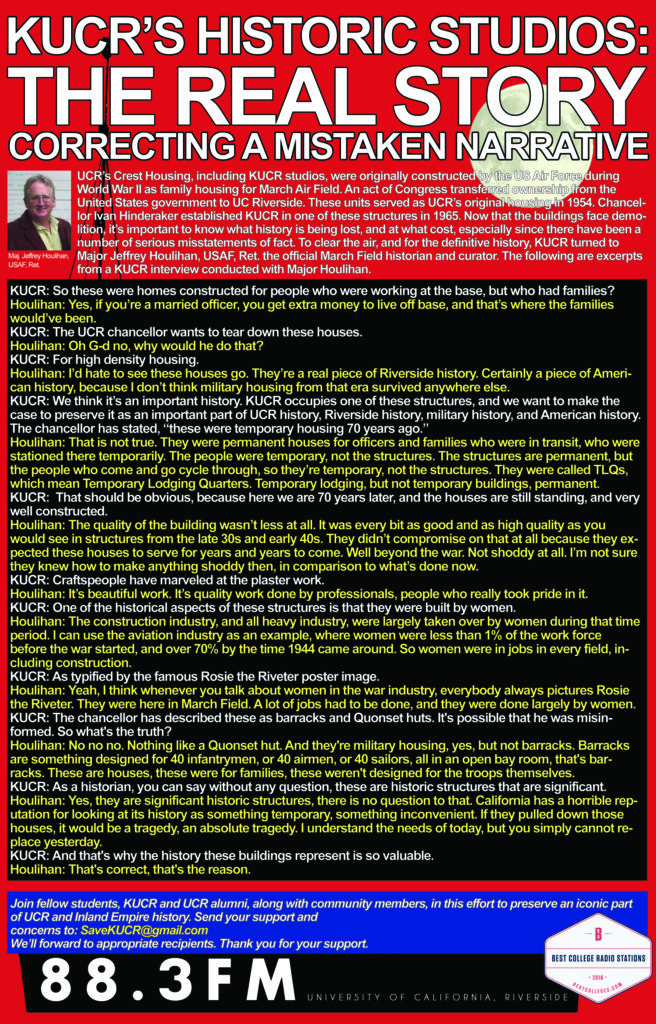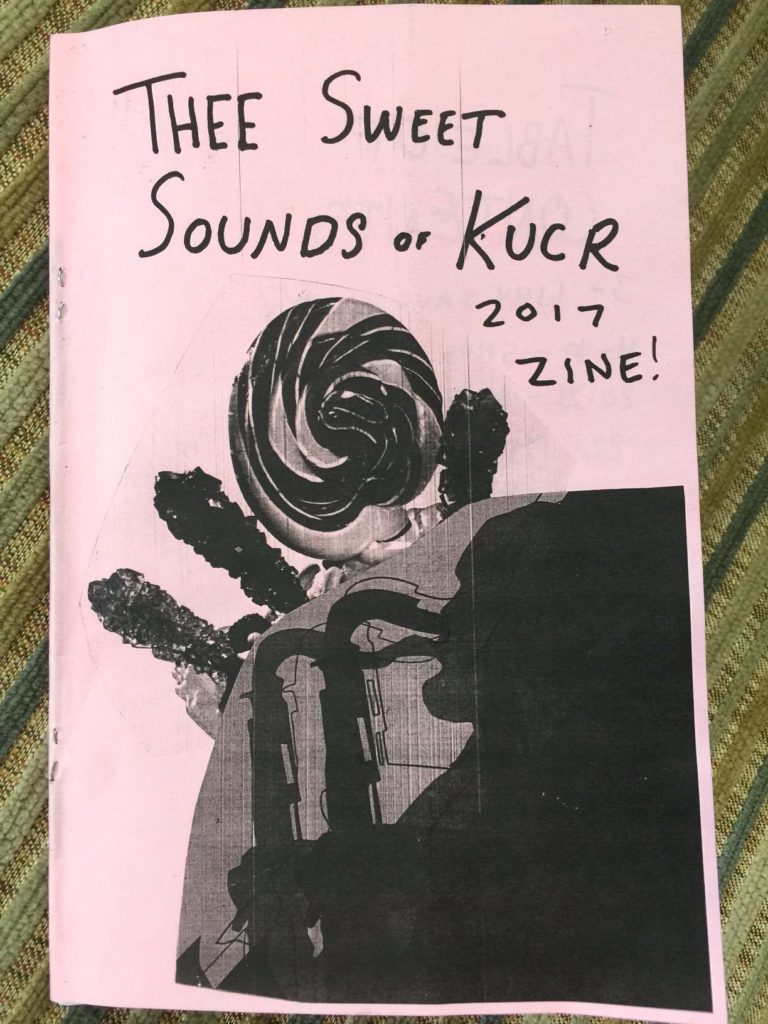
UCR’s Crest Housing, including KUCR studios, were originally constructed by the US Air Force during World War II as family housing for March Air Field. An act of Congress transferred ownership from the United States government to UC Riverside. These units served as UCR’s original housing in 1954. Chancellor Ivan Hinderaker established KUCR in one of these structures in 1965. Now that the buildings face demolition, it’s important to know what history is being lost, and at what cost, especially since there have been a number of serious misstatements of fact. To clear the air, and for the definitive history, KUCR turned to Major Jeffrey Houlihan, USAF, Ret. the official March Field historian and curator. The following are excerpts from a KUCR interview conducted with Major Houlihan.
KUCR: So these were homes constructed for people who were working at the base, but who had families?
Houlihan: Yes, if you’re a married officer, you get extra money to live off base, and that’s where the families would’ve been.
KUCR: The UCR chancellor wants to tear down these houses.
Houlihan: Oh G-d no, why would he do that?
KUCR: For high density housing.
Houlihan: I’d hate to see these houses go. They’re a real piece of Riverside history. Certainly a piece of American history, because I don’t think military housing from that era survived anywhere else.
KUCR: We think it’s an important history. KUCR occupies one of these structures, and we want to make the case to preserve it as an important part of UCR history, Riverside history, military history, and American history. The chancellor has stated, “these were temporary housing 70 years ago.”
Houlihan: That is not true. They were permanent houses for officers and families who were in transit, who were stationed there temporarily. The people were temporary, not the structures. The structures are permanent, but the people who come and go cycle through, so they’re temporary, not the structures. They were called TLQs, which mean Temporary Lodging Quarters. Temporary lodging, but not temporary buildings, permanent.
KUCR: That should be obvious, because here we are 70 years later, and the houses are still standing, and very well constructed.
Houlihan: The quality of the building wasn’t less at all. It was every bit as good and as high quality as you would see in structures from the late 30s and early 40s. They didn’t compromise on that at all because they expected these houses to serve for years and years to come. Well beyond the war. Not shoddy at all. I’m not sure they knew how to make anything shoddy then, in comparison to what’s done now.
KUCR: Craftspeople have marveled at the plaster work.
Houlihan: It’s beautiful work. It’s quality work done by professionals, people who really took pride in it.
KUCR: One of the historical aspects of these structures is that they were built by women.
Houlihan: The construction industry, and all heavy industry, were largely taken over by women during that time period. I can use the aviation industry as an example, where women were less than 1% of the work force before the war started, and over 70% by the time 1944 came around. So women were in jobs in every field, including construction.
KUCR: As typified by the famous Rosie the Riveter poster image.
Houlihan: Yeah, I think whenever you talk about women in the war industry, everybody always pictures Rosie the Riveter. They were here in March Field. A lot of jobs had to be done, and they were done largely by women.
KUCR: The chancellor has described these as barracks and Quonset huts. It’s possible that he was misinformed. So what’s the truth?
Houlihan: No no no. Nothing like a Quonset hut. And they’re military housing, yes, but not barracks. Barracks are something designed for 40 infantrymen, or 40 airmen, or 40 sailors, all in an open bay room, that’s barracks. These are houses, these were for families, these weren’t designed for the troops themselves.
KUCR: As a historian, you can say without any question, these are historic structures that are significant.
Houlihan: Yes, they are significant historic structures, there is no question to that. California has a horrible reputation for looking at its history as something temporary, something inconvenient. If they pulled down those houses, it would be a tragedy, an absolute tragedy. I understand the needs of today, but you simply cannot replace yesterday.
KUCR: And that’s why the history these buildings represent is so valuable.
Houlihan: That’s correct, that’s the reason.







